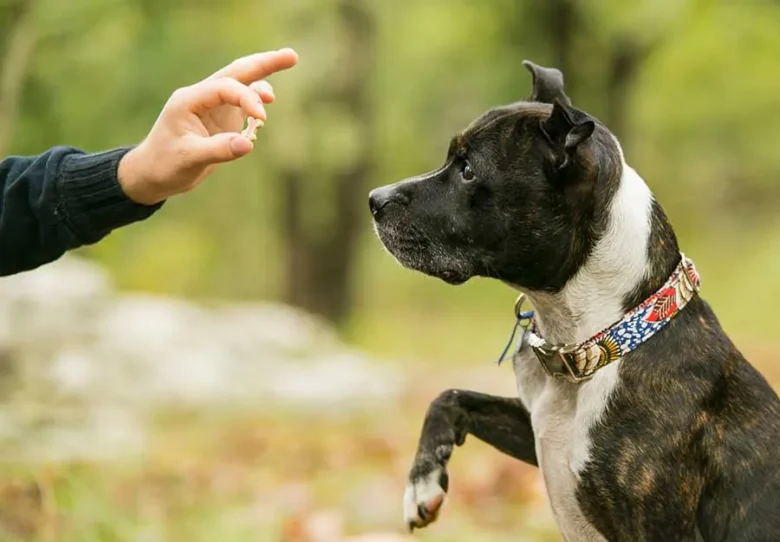Training a pet can be both fun and difficult. It is normal to encounter problems when working with dogs, cats, or other animals. These can test your patience and skills. To get the best results from your pet training, you need to understand and deal with these common problems. This article discusses some common problems that arise when training pets and provides tips on how to solve them.
1. Dealing with Distractions
Dealing with distractions is one of the most difficult parts of teaching a pet. Pets are often interested in new things and can be distracted by other animals, people, or even smells that sound interesting. To combat this problem, it is important to ensure that training sessions, especially in the beginning, are free of interruptions. Choose a quiet place so that your pet can focus on you and the task at hand. As your pet becomes better trained, distractions should be gradually introduced. For example, once your pet is good at following simple instructions in a safe place, move the exercise to a place where distractions are easier, such as a park or a busy street. Use valuable gifts to get their attention and encourage them to behave the way you want them to, even when they are distracted.
2. Lack of Consistency
Consistency is key when teaching pets, but many pet owners have a hard time keeping up. Pets behave best when they know what to expect. Giving your pet different commands, rules, or training sessions at different times can confuse your pet and slow down his progress. Fix this by developing a regular training plan and sticking to it. Make sure everyone in the family follows the same rules and training methods. Use the same commands and cues for different behaviors. A training log can help you track your progress and figure out where your methods aren’t working. Regularly reviewing and changing your training methods can help you stay on track and focused on your goals.
3. Lack of Motivation
Like people, pets have different levels of drive. Some people may be motivated by rewards, while others may be more interested in toys or praise. If your pet doesn’t move during training, they may not be motivated. Find out what makes your pet happy and give them that gift. A valuable treat or your pet’s favorite toy can grab their attention and help them do what you want them to do. Also, make training fun and interesting. To keep your pet interested and excited about learning, change up the rewards and let them play. The more fun the activity is, the more likely your pet will want to join in.
4. Worry and Anxiety
If your pet is scared or anxious, they may not be able to learn. Training a nervous or anxious pet can be difficult, so it’s important to make sure they are in a positive and supportive environment. Start your training with simple, stress-free tasks and work your way up to more difficult ones. To help your pet feel more secure, give them gentle praise and positive feedback. Stay away from punishments and harsh corrections, as these can worsen their fear and anxiety. Instead, work on building trust by being patient and allowing good things to happen to you. If your anxiety doesn’t go away, it’s best to talk to an experienced trainer or behaviorist who specializes in anxiety-related issues.
5. Increases the Chances of Bad Behavior
One of the hardest things about training a pet is that bad behavior can unintentionally become more common. An example of this is that if you give your pet attention or treats when he misbehaves, he may do it again to get more attention. To prevent this, make sure that you only encourage good behavior and ignore or correct bad behavior. To control behavior, you have to be consistent. If your pet does something you don’t want him to do, help him take better action and thank him when he does it. Don’t reward or focus on the habit you want to break. You can change your pet’s behavior by consistently rewarding good behavior and reducing the amount of time you reward bad behavior.
6. Training Plateau
It is normal for pets to not seem to make progress in training, no matter how hard you try. While this can be frustrating, it is important to keep trying and be patient. If you get stuck, try changing up your training. To get your pet interested in training again, add new tasks or change routines. Review your training methods to make sure they are still effective. Making tasks easier or breaking them down into smaller steps may help your pet get past this plateau. If necessary, talk to an experienced trainer. They can provide you with new ideas and ways to overcome training hurdles.
7. Lack of Socialization
Socializing your pets, especially dogs and cats, is an important part of training them. If you do not introduce your pet properly, they may become fearful or aggressive toward new people, animals, or places, which can make training more difficult. To solve this problem, introduce your pet to different social situations slowly and in a positive, controlled manner. Start with low-stress situations and add more challenging social situations over time. When people behave calmly and appropriately in new situations, reward them with positive reinforcement. Socializing your pet can make them more agile and confident, making training easier and more fun.
8. Communication Issues
To make pet training go smoothly, you need to be able to communicate clearly. Pets need clear and consistent commands and cues to know what to do. If your pet seems lost or aloof, it may be because your communication is not clear or consistent. Make sure your cues and cues are clear and easy to understand. Always use the same hand signals and verbal cues and do not give unclear or contradictory commands. Show your pet exactly what you want him to do and reward him immediately when he does it.
Conclusion
To solve common problems when teaching your pet, you need to be patient, consistent, and motivated. By avoiding distractions, staying consistent, making sure you are motivated, and healthily dealing with fear or anxiety, you can overcome problems and achieve your training goals. Keys to an effective training experience also include encouraging good behavior, dealing with training plateaus, and not overexerting yourself. If you work hard and thoughtfully, you can overcome these issues and help your pet reach his full potential.
FAQs
1. What are the most common pet training issues?
Dealing with distractions, being consistent, motivating your pet, dealing with fear and anxiety, not reinforcing unwanted behavior, overcoming training plateaus, avoiding overexertion, making sure your pet is adequately socialized, and overcoming communication barriers are all possible as something that will be difficult: training stops.
2. How do I keep my pet from getting distracted during training?
Begin training in a quiet, controlled area to avoid distractions. As your pet improves, distractions should be slowly added. When your pet is distracted, you can use high-value treats to keep him focused and teach him the behavior you want him to do.
3. Why is it important to be consistent when training your pet?
Consistency is important because it helps your pet know what you want from him or her. Giving your pet confusing rules or commands will confuse him and slow down his learning process. Set a fixed training time and stick to it. Always use the same commands and methods.
4. How do I keep my pet interested in training?
What excites your pet the most? Try treats, toys, or praise. Then use it as a prize. Train your pet in fun ways and vary the treats to keep him interested.
5. What should I do if I am scared or nervous while teaching my pet?
Start with easy tasks and work your way up to more difficult tasks to create a positive and nurturing environment. Give people gentle encouragement and praise. Don’t punish them, and if their fear or anxiety persists, you may want to consult a specialist.



